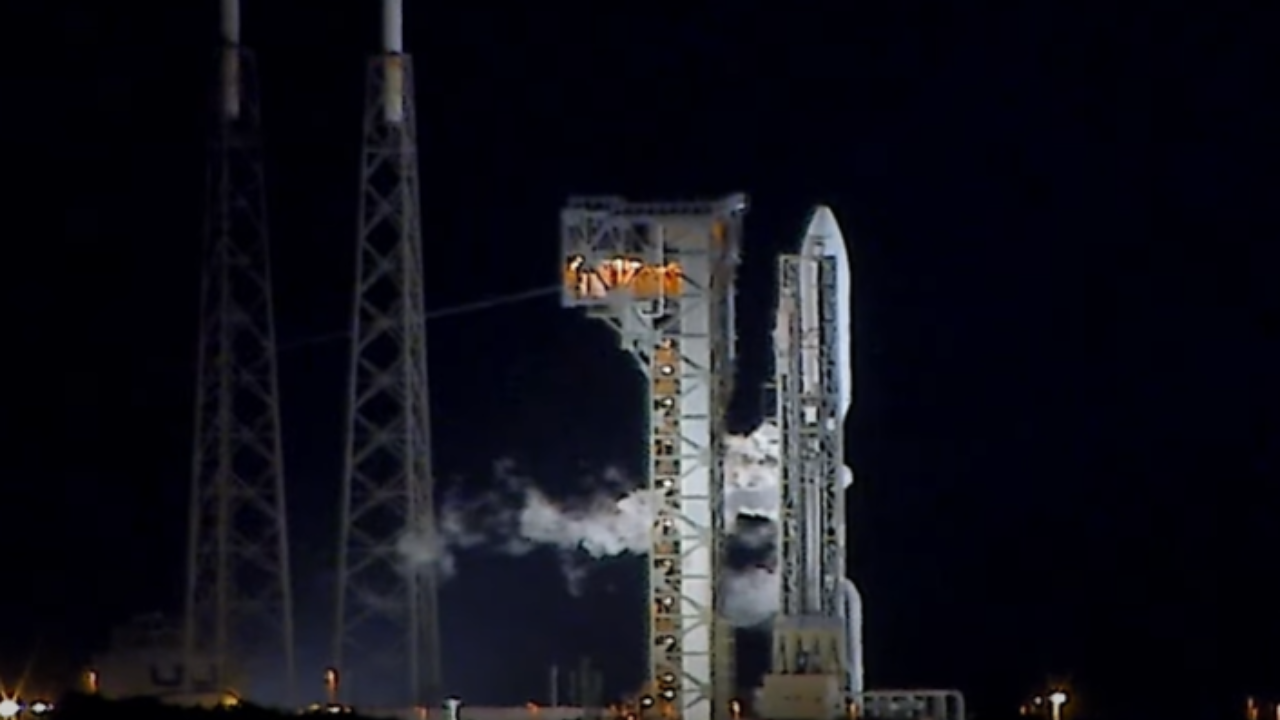Launch of the last national security mission by the Atlas V rocket
According to ULA, the renowned Atlas V rocket launched the top-secret USSF-51 mission for the Space Systems Command of the U.S. Space Force.
At 6:45 a.m. ET, it lifted out from Space Launch Complex-41 at the Cape Canaveral Space Force Station.
The 45th Weather Squadron predicted an 80% chance of favorable launch circumstances, with cumulus and anvil cloud rules being the only causes for concern.
The first-stage booster of the Atlas V does not land, in contrast to SpaceX’s Falcon 9 rockets.
Concerning the mission and Atlas V
Apart from the fact that it is a classified National Security Space Launch mission for the Space Systems Command (SSC) of the U.S. Space Force, not much is known about the USSF-51 voyage.
As ULA moves to the next generation Vulcan rocket, whose first launch this past January marked the beginning of a new era of space capabilities by providing higher performance and greater affordability while offering the world’s only high energy architecture rocket to deliver any payload, at any time, to any orbit, the USSF-51 mission marks the 58th and final national security launch on Atlas V, according to a press release issued by ULA to the media.
An SSC representative stated in a different news release that the most recent mission “is looking great!”
American Space Force Colonel Jim Horne, senior material leader for SSC’s Launch Execution Delta, said, “The Space Force Atlas V team has an amazing record of serving our National Security Space lift needs.” “We have always had great collaboration with this team, and this mission—our most recent launch with the Atlas V—looks fantastic!”
Even though the Atlas V rocket, which has been in operation since 1957 and has been involved in military, commercial, government, and scientific missions, may have completed its final NSSL mission, it still has some space miles left before being retired.
According to the SSC, the Atlas V rocket has 15 additional non-defense and commercial flights left, including crewed launches.
The next launch for ULA will be its second certification flight of the Vulcan rocket from Cape Canaveral Space Force Station in September 2024, however many will be waiting to see Atlas V’s next mission.
January 2024 marked the launch of the Vulcan rocket’s first certification test.
When to view the Atlas V rocket launch in New Smyrna, Daytona Beach, early in the morning
Prepare your preferred caffeinated beverage, such as coffee, as an early-morning rocket launch is about to take off.
On Tuesday, July 30, at 6:45 a.m. EDT, United Launch Alliance will launch an Atlas V rocket for the Space Force’s Space Systems Command from Cape Canaveral. This will be the last rocket in the Atlas family’s national security fleet.
The Space Force’s secret payload is the USSF-51 mission.
Even though this is the last national security payload the rocket will carry, there will still be more Atlas V launches before the rocket is formally retired. The now-retired Delta IV and Atlas V rockets will be replaced by the ULA Vulcan rocket.
If the weather permits and cloud cover permits, it ought to be observable from the Space Coast. Additionally, a rumble usually occurs minutes after liftoff.
Here are some recommendations for where to view the launch from this location, along with a real-time weather radar to check for precipitation and other important information.
This story will be updated if this launch is altered in any way.
ULA gets ready for the Atlas 5 rocket’s last military launch.
The final Atlas 5 national security launch, USSF-51, will occur as ULA is ready to finish Vulcan’s certification for Space Force missions.
On July 30, United Launch Alliance (ULA) is scheduled to launch the last Atlas 5 rocket for the United States military.
USSF-51, the classified payload, is slated to launch from Space Launch Complex 41 at Cape Canaveral Space Force Station at 6:45 a.m. Eastern on its way to a geostationary Earth orbit.
This mission will be the 53rd national security launch for the Atlas 5 and the 100th for ULA.
Additionally, USSF-51 is the first launch by ULA under the National Security Space Launch (NSSL) Phase 2 contract, which Space Force granted to SpaceX and ULA in 2020. SpaceX launched its first Phase 2 mission in January 2023, but problems with the next-generation Vulcan Centaur rocket’s construction have delayed ULA’s schedule.
With its improved performance and versatility for a wide range of missions, the Vulcan Centaur rocket is intended to replace both the Atlas 5 and Delta 4 rockets. Unfortunately, obstacles in the development process caused its initial deployment to be postponed until January 2024 and its certification for use in national security missions to be delayed.
Prior to being reallocated to the reliable Atlas 5, USSF-51 was supposed to fly on Vulcan as part of the Phase 2 contract.
due to the essential nature of the spacecraft we are deploying. We decided to switch from Vulcan to Atlas in order to have more scheduling stability. SpaceNews was informed by Gary Wentz, vice president of government and commercial projects at ULA.
The Atlas 5 is saying goodbye to the NSSL program, but its existence is far from ended. Using the last of its Atlas rockets, ULA intends to carry out 16 more commercial and non-defense missions, including crewed launches.









